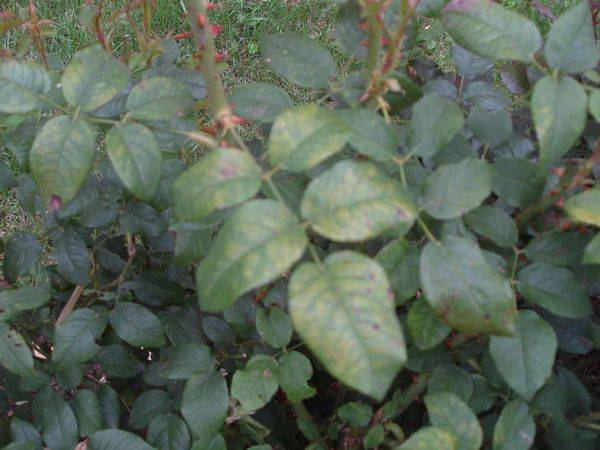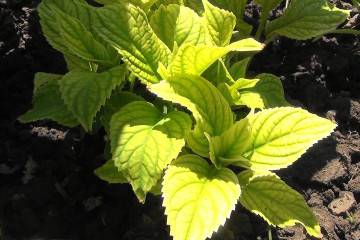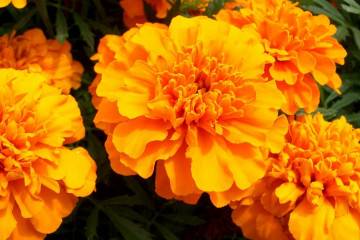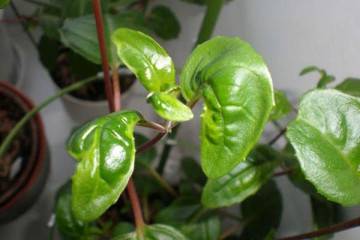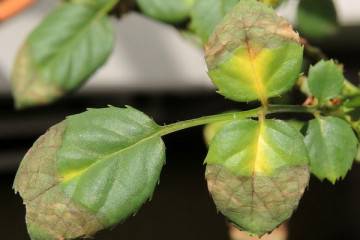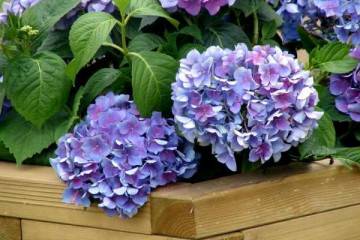Why does a rose curl leaves and dry
Content:
Not always the right choice of seedlings, processing and preparation of shoots for planting lead to a lush flowering of the queen of the garden. It's a shame when the rose begins to hurt, and as a result of untimely assistance it dies. Both experienced gardeners and novice amateurs often have the problem of deformation of parts of the plant: flowers, petals of buds, stems and leaves. Experienced advice will help you to answer why the leaves of the rose curl. It is necessary to process the plant in time and create conditions for development.
Garden roses have leaves curling inward - is this normal or not?
A healthy plant has leaves of a juicy, bright green hue, shiny, smooth, even, without spots or damage. What if the leaves of the rose began to curl? First of all, you need to understand the reason for the deformation of the parts of the flower.
Causes of leaf curling
The reasons for the painful state of the main organ of the flower include non-compliance with the conditions for planting a rose. Even before purchasing a seedling, gardeners draw up a plan for placing a culture on a site. They take into account both the variety of the plant and the time of year for the placement of the future bush.
The main causes of leaf curl are:
- lack of water;
- high temperature, no shade at noon at the site of the rose planting;
- wrong place;
- the presence of viral diseases;
- pest attack;
- lack of potassium in the soil.
After it was possible to find out why the leaves of the rose are twisting, gardeners propose to proceed to active steps to save the flower. Pest control started on time, as well as proper care, will save the plant from death.
Lack of moisture and high temperature
Rose bushes are watered at least once a week, and even more often on hot summer days. With a lack of moisture, the plant begins to shed buds and leaves. The fact that the leaves are curled up in a tube is considered a signal of rare watering. Too frequent consumption of water also badly affects the appearance of the flower. You should adhere to the recommendations of experienced gardeners and not create conditions for culture discomfort.
Direct sunlight burns the garden beauty, the flowers become small, the leaves curl and turn yellow. To solve the problem, the landing site is shaded from noon to evening.
Lighting
The rose is considered a light-loving culture. It is necessary to take care of good lighting for its development and lush flowering. Do not plant this plant near large trees. They block the light, and also make the soil around them depleted, taking away nutrients.
Viral diseases
When viral diseases occur, the flower loses its buds, and the greenery loses its elasticity and color. The final stage is the twisting of the leaves. It is best to root out the plant and destroy it, otherwise the virus will infect neighboring flowers.
Pests
Gardeners know why rose leaves curl. During the development of young seedlings, roses are often affected by pests. The reasons for their appearance are improper tillage and other types of agrotechnical work. Parasites are located on buds, leaves, petals, causing considerable damage to roses. The most common types are:
| Rose aphid | Leaf rollers | Spider mite | Rosaceous sawfly | Rose leafhopper |
| It settles in buds, leaves, buds. | The larvae of caterpillars feed on fresh, only blossoming buds, then leaves. | Lives on the underside of a leaf, a shoot. | Visible on the leaves. | They eat out parts of the plant. |
| It feeds on the juice of shoots, weakens them. The stems become crooked, the leaves may curl, and mold soon appears. | When feeding, the larvae fold the plates of plants, they dry and die. | The presence of cobwebs and deformed leaves indicate infection. | Parts of the plant change shape, dry out, or an openwork mesh remains from them. | The leaves dry up and fall off. |
Lack of potash fertilizers
The deficiency of potassium fertilizers makes the root system weak, the plant does not accumulate moisture in sufficient quantities. All this interferes with the nutrition of the flower, the appearance of the shoots and leaves signals a problem.
How to cure curling rose leaves: tips from florists
The mosaic virus appears in a plant when budding in the spring. Infected shoots become weak, they cannot be used during reproduction, it is better to remove them. Revision and regulation of the irrigation regime will solve the problem of leaf deformation. Shaded areas with roses will help to cope with the heat exposure of the seedlings.
Disease and pest control
It is difficult to fight viral diseases; it is worth digging up the plant and removing it from the site. Pest control includes spraying, mechanical damage and hand picking of parasites. What you need to do to control pests:
- with rose aphids, the outer and inner parts of the leaf and shoots are washed with onion infusion (300 g per 9-10 liters of water). A good result is obtained by the natural method: the ladybug is placed along the affected stems;
- with a leaf roll, they are straightened by manual collection and mechanical removal of parasites. Caterpillars are destroyed, the plant is treated with 0.2% karbofos solution. It is better to cut out diseased shoots and then burn them outside the territory of the site;
- spider mites are considered the most dangerous pest. Lives on the underside of the leaflet, envelops the entire surface of the plate with a cobweb. The infected area is treated with onion infusion, cold water;
- The rosy sawfly lays eggs, from which larvae emerge. An effective way to deal with it will be to manually remove the egg-laying leaves. The plant is treated with a special preparation, it is worth using a contact insecticide;
- rose leafhoppers leave a clutch of eggs in the root area. The plant will be saved by treatment with a special preparation.
Experienced and novice gardeners can make a mistake in caring for a capricious beauty, the queen of garden flowers. In order to avoid infection of plants with pests and the appearance of viral diseases, it is worth considering a work plan on the site in advance, long before planting a rose. In this case, the location of the planting will be taken into account, options for establishing a support for the flower will be thought out, the problem of shading the culture will be solved. Proper maintenance will allow gardeners to admire the abundant flowering of the rose for a long time.



